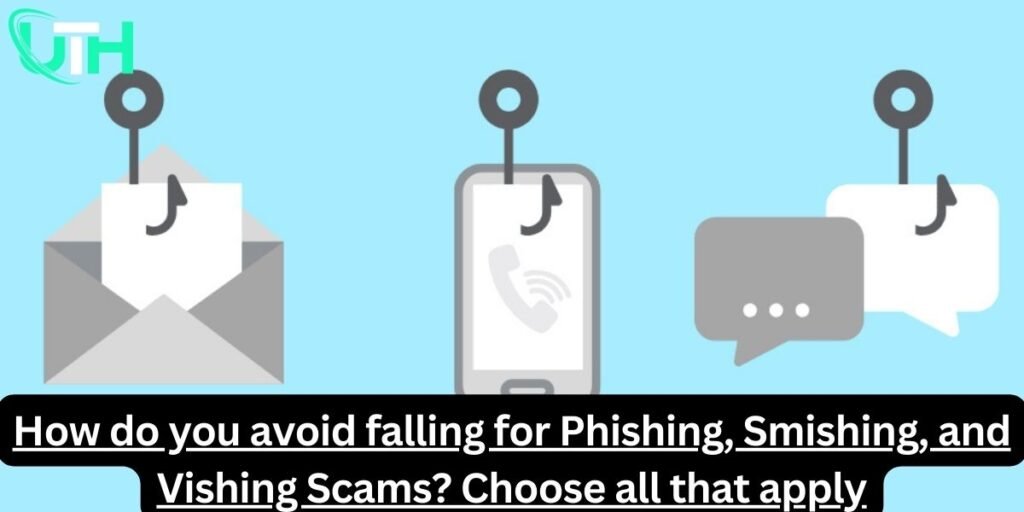To avoid falling for phishing, smishing, and vishing scams, you can follow these practices:
Choose all that apply:
- Verify the Source
- Always double-check the sender’s email address, phone number, or website URL for authenticity.
- Avoid Clicking on Suspicious Links
- Do not click on malicious links in unsolicited emails, text messages, or pop-ups.
- Do Not Share Personal Information
- Never provide sensitive information like passwords, bank details, or social security numbers over the phone, email, or text unless you’re certain of the recipient’s identity.
- Be Cautious of Urgent Requests
- Scammers often use urgency to pressure you into acting without thinking. Take a moment to assess the situation.
- Use Multi-Factor Authentication (MFA)
- Enable MFA on your accounts for added security.
- Keep Software and Devices Updated
- Regularly update your operating system, browser, and antivirus software to protect against vulnerabilities.
- Don’t Trust Caller ID Alone
- Caller ID can be spoofed. Verify the call independently if someone claims to be from a legitimate organization.
- Educate Yourself on Common Scams
- Stay informed about the latest phishing, smishing, and vishing tactics.
- Report Suspicious Activity
- If you encounter a scam attempt, report it to your bank, IT department, or a government body like the FTC or local authorities.
- Use Spam Filters and Security Tools
- Enable email spam filters and security software to minimize exposure to fraudulent messages.
By combining these precautions, you can significantly reduce your risk of falling for phishing, smishing, and vishing scams.
Read More
What is smishing and phishing?
What is Smishing in Cyber security?
What is Vishing in Cyber Security? Defination and Meaning, Attacks, Prevention.
